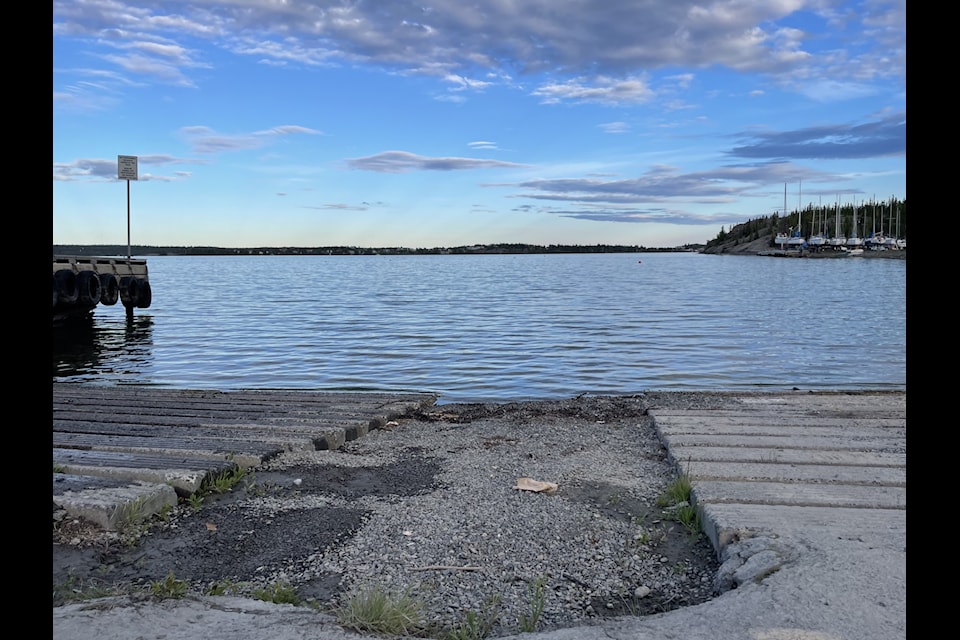The Giant Mine Remediation Project hosted a public information session on June 11.
And during the two-hour long presentation, the presenters needed to navigate some shaky waters.
An upcoming project will be happening in three phases with the first spanning from now to July 2028. That consists of getting rid of an existing underwater pipeline, according to the project's presentation. It's all to clean up the contamination at Giant mine, in particular the amount of arsenic there.
In-water construction is scheduled to begin July 15 and end Aug. 14.
The big problem is the effect it could have on people trying to launch their boats in the summer. According to the project's presentation, parking and water access will remain status quo, but there is one area of concern: traffic.
Natalie Plato, deputy director of the remediation project for Crown–Indigenous Relations and Northern Affairs, said they have not yet done a traffic study for this project, nor was it on their radar.
"From our perspective at the remediation project, when we committed to keeping access point open, that was what we committed to instead of closing everything down completely," said Plato.
That opened up a wave a questions, such as whether drivers with boat trailers, for example, will have enough mobility to launch their boat and turn their car around.
By the presentation's end, both Plato and Erika Nyyssonen, the GNWT's senior advisor for the project, did say that getting more data on traffic is now something to consider.
But that's also something they should have been doing over the last four or five years, said one of the attendees at the presentation in response.
Another attendee said that an informal count last year on a nice day in July saw 250 boats launching from the public dock.
"We've provided that feedback more than a year ago, so to hear that it's on your radar now isn't very reassuring," the speaker said.
There's also the concern of low water levels. At the moment, Great Slave Lake is experiencing record low water levels. One solution Nyyssonen suggested was making some improvements to the current boat ramp.
There's no final answer on what those improvements will look like though and the GNWT has no contractor to work on that currently, she indicated.
Phase two of the program is slated to begin in summer 2028 and finish around fall 2030, while phase three is scheduled to bein spring 2030 and ends fall 2038. Until then, there's more work to do, especially when it comes to communication around blasting at the mine and access to the boat launch, it seems.
One of the attendees shared their experience when she was going to check on her boat, she said. Although she was outside of the blasting zone, she claimed she was approached by one of the workers there in what she felt was a rather uncomfortable manner.
"There have been two women alone at the sailing club that have had interactions where the person clearing the area approaches us, their first question before introducing themselves says 'are you alone here?'"
When the worker informed her that blasting was going on in the area, she said she'd leave, but the worker then allegedly said "No, we have about half an hour here," she said and kept chatting.
That man also allegedly invited the woman to sit and watch them do the blasting in his truck, the speaker added.
Plato said she would follow up on this incident immediately.
"That is not acceptable," she said. "That's not even within the blast radius."
